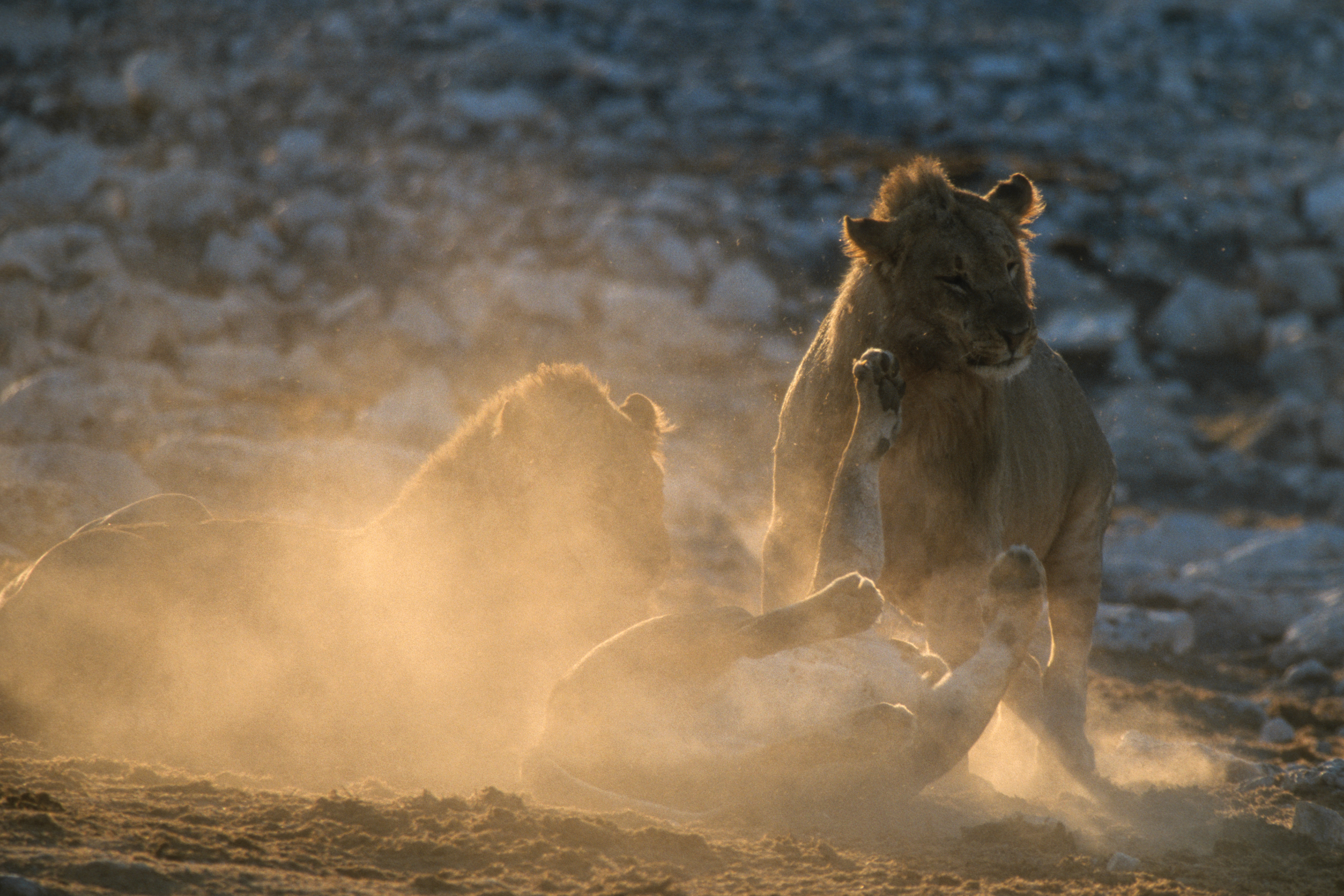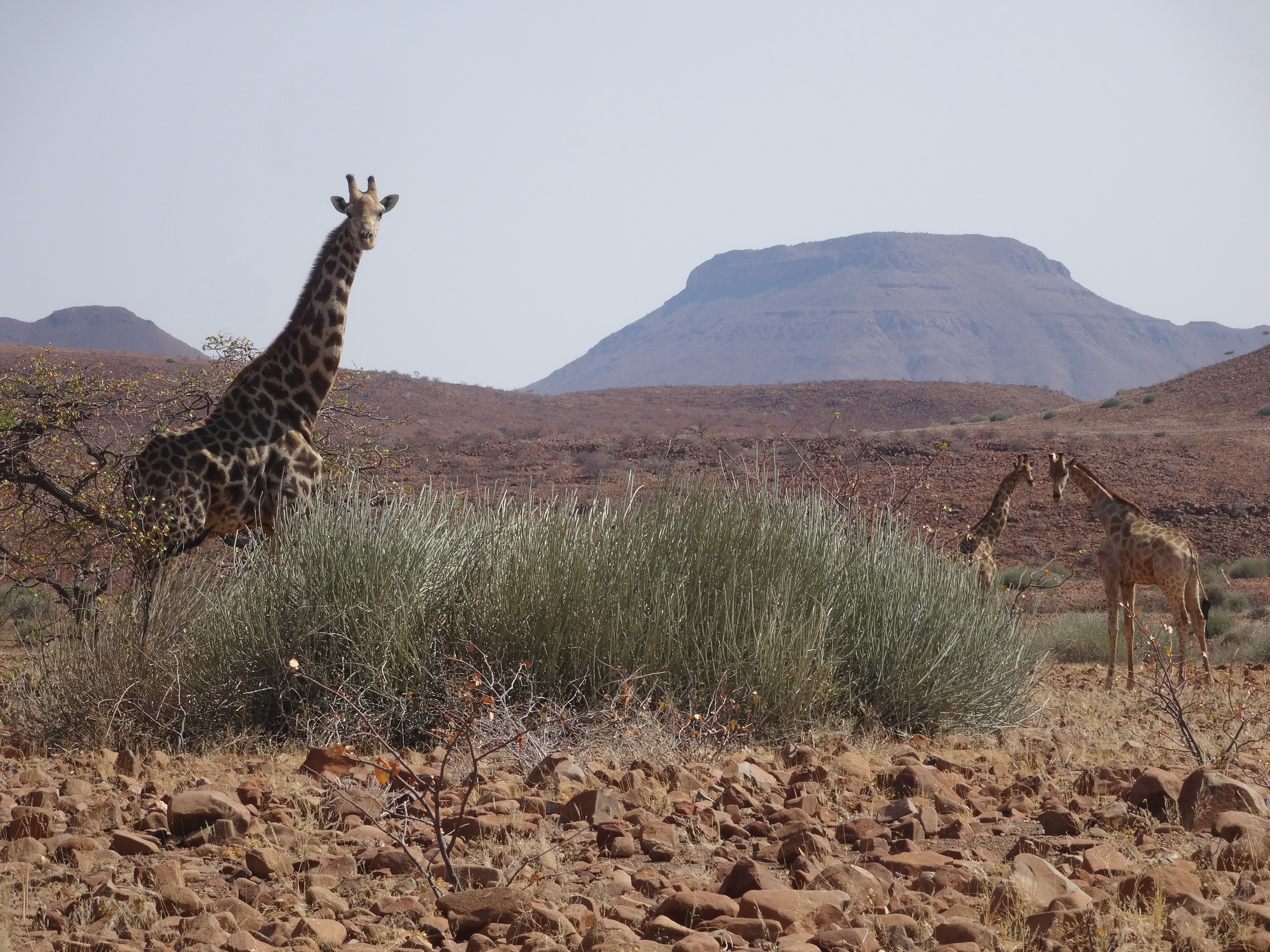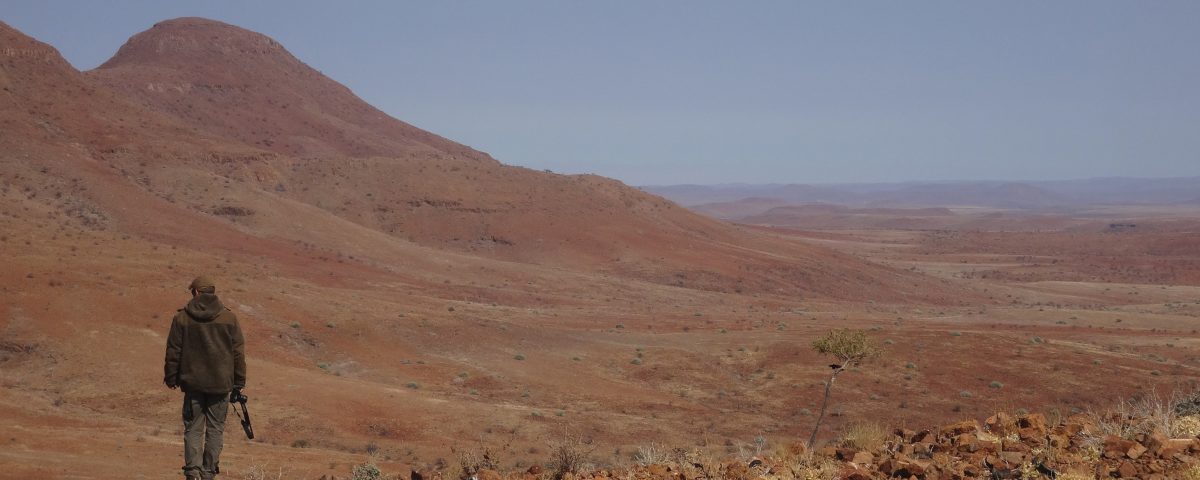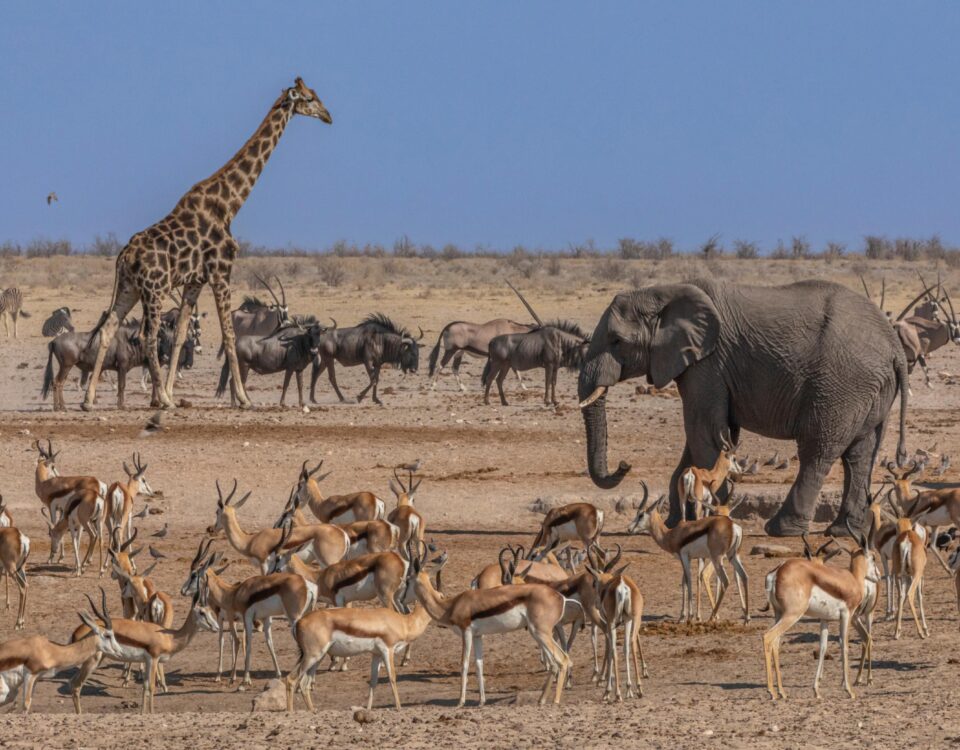
A place for Lions
January 11, 2019
Lion Conservation and Sustainable Use
January 12, 2019We spent the first day scouting for lion tracks, and securing bait. For this, we managed to bag a springbok and a Hartmann’s zebra. While going about our business we located the tracks of two separate prides of lion – the first consisting of one male and six females, and the second group of one male and two females. We also noted a few solitary leopard tracks as well as numerous hyaena spoor, which seemed to cover every road we travelled on. Predators were in abundance, which I found surprising, considering that other game (their food source) was so sparsely available. We put up bait in two separate valleys and kept the rest of the meat for the next day, as we were planning to explore new areas and hopefully find more lion activity.
Sunrise the next day found us out and about amongst the mountains. Neither of our baits had been touched, so we pushed on into areas which we hadn’t been to yet. We came across a fountain at the bottom of a valley, surrounded by rugged mountains – a beautiful oasis in the middle of this harsh world. A lot of milk bush and salvadora thickets were scattered at the bottom of the valley around the waterhole creating ideal ambush sites for predators, and sure enough, after closer inspection we found a spot where a big male lion had wandered from one shady clump of bush to the next, to escape the heat of the day. He had moved on in a southerly direction, so we decided to carry on scouting in the direction in which he had left. It was now nearing midday, and the heat was building up steadily. We decided to find a shady tree for a short siesta, before continuing with the hunt.
As we crested a long flat hill, we saw an animal standing on an opposite hill at roughly two kilometres from where we were. At first, both of us thought it was a zebra, but as soon as I had him in my binoculars, it felt like my heart got jammed in the back of my throat. It was a big male lion. He was staring straight at us from across the valley. We immediately dropped to the ground, in the hope that he wouldn’t run off. But this is exactly what he did. He trotted off to a clump of milk bush and lay down facing in our direction. We remained motionless lying on the ground, studying him through our binoculars. Even at this distance, I could see his dark mane and the slightly bluish grey colour of his body. Due to lack of cover, there was absolutely no way for us to get closer to him.
While we were lying flat on the hot rocks, I started to study the surrounding terrain. There was a deep ravine separating the two hills on which we and the lion were, at the bottom of it was a singular mopane tree, which sort of stuck out like a sore thumb. This tree was covered with Pied Crows. I pointed this out to my client, and as the lion seemed reluctant to leave the area, we concluded that he must have had a kill somewhere close by. I told my client that we should leave and return in the late afternoon in the hope that the lion would be back at his kill. This would hopefully provide us with an opportunity to pull off a good stalk. We returned at about four in the afternoon on the downwind side of the ravine and stopped the truck about a kilometre away from the area, behind a hill. We proceeded very cautiously on foot, trying to make as little noise as possible – not an easy feat,
considering that we were walking on loose rock the whole time. I kept the mopane tree in sight and moved slowly towards it. There was no sight of the lion. When we were still roughly 400 metres away from the tree, the lion suddenly bolted out from under a bush and ran up the hill. While the lion was facing away from us we used the opportunity to find cover under a milk bush. Again we were lying flat on our stomachs on the hot rocks. The lion trotted up the hill and soon lay down again under a bush, facing in our direction. There was very little we could do, other than to continue lying on the ground, waiting for the big cat to make the next move. We lay there for about an hour, constantly glassing the lion on the opposite hill. A jackal wandered past us with a piece of meat in his jaws, confirming our suspicion that there was a kill at the bottom of the valley. Another two jackals came down the hill and disappeared into the scrub next to the mopane tree.


This seemed to be too much for the lion who stood up and proceeded down the hill at a fast pace towards his kill. He then disappeared into the bush at the base of the tree. is was the opportunity I had been waiting for. We immediately got up and started crawling down the hill, using the scattered milk bushes as cover. By now the sun was setting and our time was running out. We eventually reached the bottom of the hill and made our way to another small mopane tree, where I set my client up, so he could use a low hanging branch to rest his rifle on. We were about 40 metres away from the big tree where we suspected the kill to be. By now the adrenalin was pumping, I believe for both of us. We could not see the lion. Suddenly a jackal bolted out of the scrub and trotted over. I scanned the low bush with my binoculars and eventually made out the tail of the lion which was sticking curled up from a bush. As I pointed it out to my client, the lion moved out of the bush and walked a few metres up the hill, where he lay down again facing us.
I tried to explain to my client to shoot it in the chest, which I could see clearly from my position, but my client could only see the head. We stood dead still. The lion seemed to be staring straight at us, an eerie feeling looking into the big orange eyes. I didn’t say anything more to my client, leaving the decision to him when to take the shot. We stood like that for about five minutes – which felt like an hour – nerves tingling. And then the unexpected crash of the shot. The lion disappeared from view behind the rocks. I asked my client where he had aimed? He told me for the head, and that he was confident about his shot. We moved cautiously out from behind our tree and immediately saw the lion lying on its side motionless. I tossed a pebble onto its stomach. It didn’t move. We approached the lion slowly. I saw that the shot was a good one – just above the right eye. A wave of relief came over both of us, I guess the release of tension during the last two hours. The lion was a superb trophy, with multiple scars from past fights on his face and body. He was lacking in condition though, his bony spine sticking out quite prominently. My client was overwhelmed and knelt down next to the big cat, stroking its mane. I left him with his lion and walked back to the truck. The mountains around me were turning from red to purple. The silence of the desert was complete. What a fantastic day of hunting.
This article was first published in HuntiNamibia 2019.


